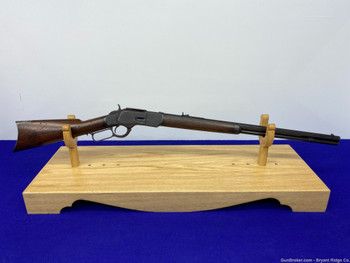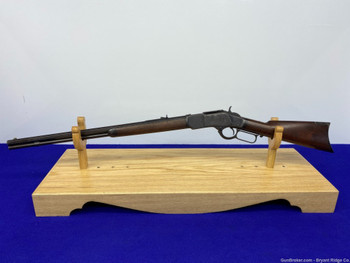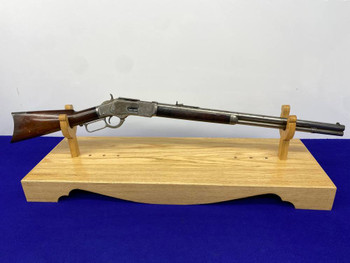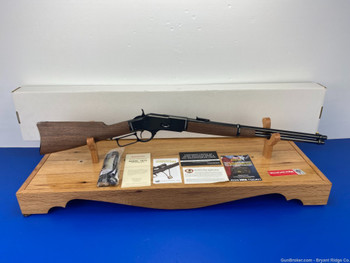Description
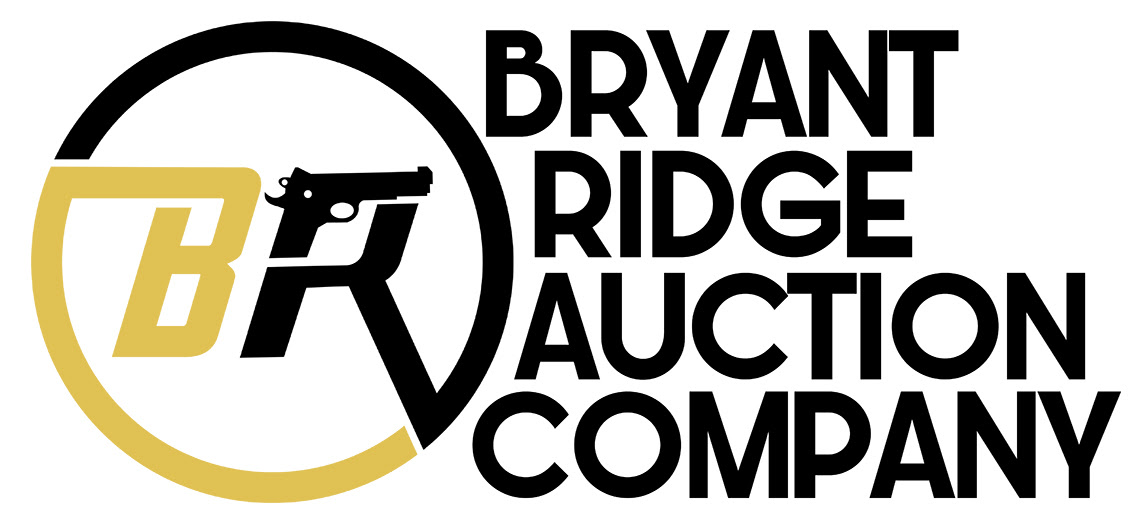
Item Description
Click here to view our other Live Auctions!
If you have missed out on this auction or are looking for a particular firearm, contact us. We have 100s of Collector Grade firearms (not on auction) in our inventory and available for immediate purchase.
Click here to let us know what firearms you are searching for!
Model: 1873 3rd Model
Serial: 247197B
Date of Manufacture: 1888
Caliber: .32-20
Finish: Blue
Barrel Length: 24" Octagonal
Optics/Sights: Fixed Front / Adjustable Rear
Stock/Grips: Walnut
Action: Lever-Action
Markings: Standard
Bryant Ridge's Analysis:
The Winchester Model 1873 is often referred to as “the gun that won the west”, and while the huge numbers produced and the overall popularity of the model in the American West may suggest there is some truth in that statement, it is in all reality hyperbole. Introduced in 1873, the Model 1873 was a significant improvement on the earlier Winchester Model 1866. The primary improvements revolved around the introduction of a reloadable centerfire cartridge (the Winchester .44 Center Fire, better known as the .44-40 or the .44 WCF) and an iron (later steel) frame and provided greater strength than the M-1873s brass framed predecessor.
The Model 1873 remained in production for just under a half century, from 1873 to 1919, and during that time some 720,610 arms were produced in a dizzying array of configurations and variations. However, in simple terms the gun was available in carbine, rifle and musket models, with the “standard” barrel lengths being 20”, 24” and 30” respectively, with full length magazines standard on all models. Of course, custom barrel lengths, as well as custom magazine lengths, sights, features and finishes were always available at additional cost. The Model 1873 went through three major “model” improvements during its lifetime, designated by collectors as 1st Model, 2nd Model and 3rd Model. Most of these changes were relatively minor in terms of the actual operation and functionality of the weapons, with small manufacturing changes to the lever, trigger and hammer mounting, dust cover and dust cover rails being typical of the improvements. Detailed analysis of these modifications can be found in the exhaustive study, The Winchester Book by George Madis. From a collector standpoint, more important evolutionary changes were the introduction of new calibers, including .38-40 (1879) and .32-20 (1882). Slightly less than 20,000 M-1873s were also produced in .22 RF.
Despite the overwhelming commercial success of the Model 1873, it was military the possibility of contracts that had actually driven Winchester to develop the model. An experimental US military trials rifle, produced by Winchester in 1871 had evolved into the Model 1873, and well into the twilight of the model’s lifetime, Winchester continued to offer a militarized version of the M-1873. The “Musket” version of the Model 1873 came standard with a 30” round barrel and a 27” magazine tube which were secured to the forend with three barrel bands. The musket was also equipped with a combination front sight/bayonet stud to accept an angular socket bayonet. Sling swivels were also provided, one located on the upper barrel band and one in the toe of the stock.
Although Winchester doggedly attempted to secure US military contracts for their design, it was universally felt within the US military that the .44-40 cartridge was underpowered and not suitable for military use. However, a number of foreign countries felt that the firepower of the Model 1873 overcame any issues with cartridge performance, and Winchester found a small market for their musket overseas. The greatest popularity for the Model 1873 Musket was found in South American countries, where the guns were acquired by government and rebel forces alike during the latter part of the 19th and early 20th centuries, as many of these newly independent countries dealt with internal power struggles. Today, most Model 1873 Muskets found on the collector market can trace their heritage to the various South American insurrections, as American importers repatriated a number of muskets from Nicaragua and Argentina during the 1950s and 1960s. As the production of Winchester Model 1873 Muskets only represented about 5% of all Model 1873 production (about 36,000 guns), and most were sold to foreign customers, the Model 1873 Musket can be “quite rare” according to author George Madis.
Return Policy:
We gladly offer a 3 day unfired inspection policy from the time that the firearm is delivered to your FFL. Refunds are available for all qualifying orders.
Shipping Details
Handgun Standard Shipping $50.00
Long Gun Standard Shipping $70.00
We strive to ship orders within the close of the following business day after payment and documentation is received.
Payment Details
We accept all forms of Payment including Personal Check, Business Check, PO Money Orders, Certified Check, Etc.
Please note we place a 7 business day hold on shipment, for all non-certified payments.
Return Policy
We gladly offer a 3 day unfired inspection policy from the time that the firearm is delivered to your FFL. Refunds are available for all qualifying orders.
Additional Details
Our #1 priority is customer satisfaction. We want to build a lasting trust in the relationship with our customers, so that you will always look to us for all your firearms needs. If you have any issues with your transactions please contact us, and we will work with you to resolve any issues you may have. We greatly appreciate your trust in us and we look forward to fulfilling all your future firearm needs.
Bryant Ridge also reserves the right to cancel any sales that may occur while gunbroker.com is experiencing technical issues that affects the entire site or a complete site outage, within an hour of the auction ending.
We have an amazing inventory of classic and collector firearms that we are adding to Gunbroker daily. Stay up to date on all of our latest auction by adding us to your favorite sellers list.

About Us








